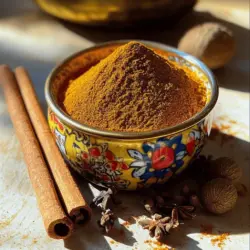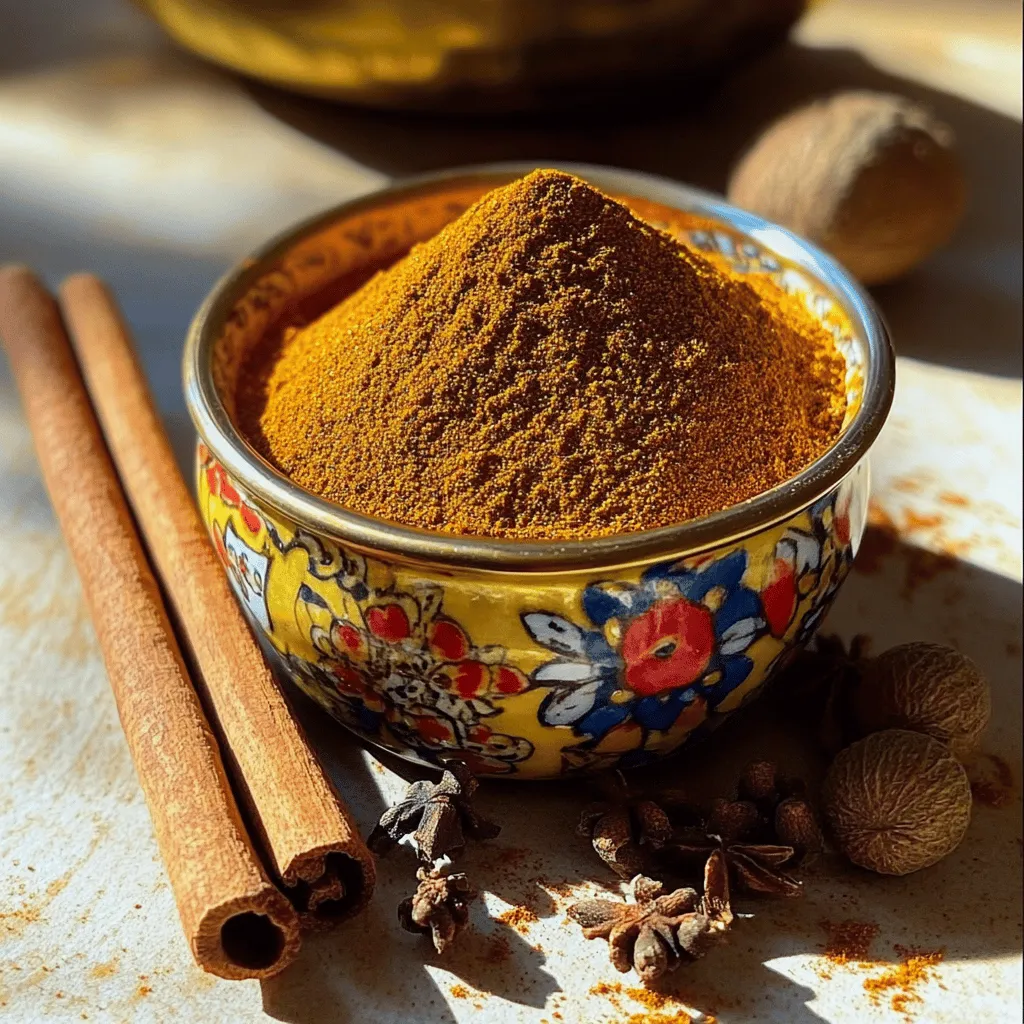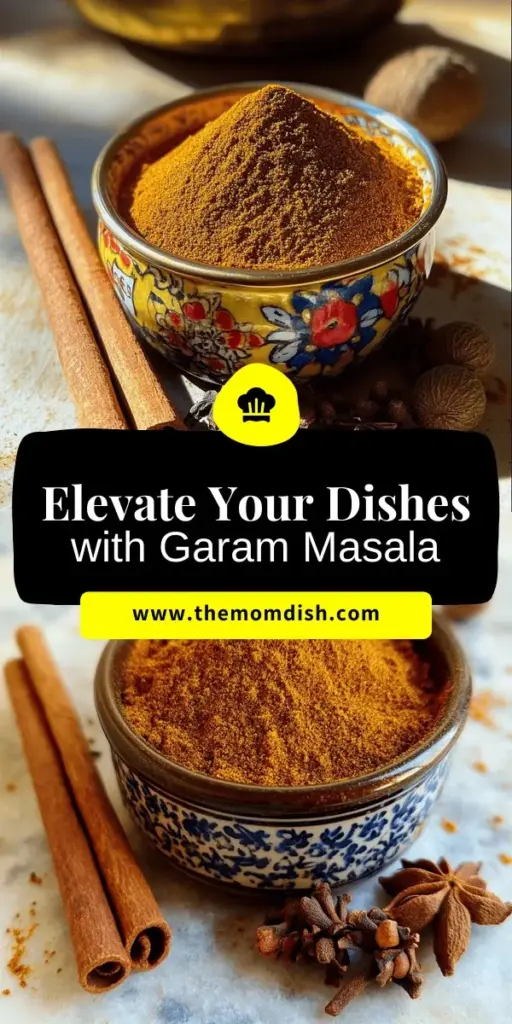Are you ready to elevate your cooking with a unique spice blend? Garam Masala is the secret ingredient that can transform your dishes from ordinary to extraordinary. Its rich history, diverse ingredients, and numerous health benefits make it a must-try. In this blog post, I’ll explore everything you need to know about Garam Masala, from its traditional ingredients to how you can make it yourself at home. Let’s dive in!
What Are the Traditional Ingredients of Garam Masala?
Garam masala is a warm spice blend often used in Indian cooking. This mix usually includes cumin seeds, coriander seeds, black peppercorns, cloves, cardamom pods, and cinnamon. Each spice adds its unique taste and aroma.
What Spices Make Up Garam Masala?
Cumin seeds give a nutty flavor. Coriander seeds add a light citrus note. Black peppercorns bring heat. Cloves offer a sweet and spicy touch. Cardamom pods add a floral hint, while cinnamon gives warmth. These spices together form the traditional garam masala spice blend.
Are There Regional Variations in Garam Masala Ingredients?
Yes, regional variations exist. In North India, you might find more cinnamon and cardamom. In South India, the mix may include coconut or dried red chilies. Each region has its unique taste based on local ingredients and preferences.
How Do You Choose Quality Ingredients for Homemade Garam Masala?
When making garam masala, choose whole spices. Whole spices keep their flavor longer than ground ones. Look for fresh, vibrant colors and good aroma. Toasting the spices before grinding enhances their flavor.
How Can You Effectively Use Garam Masala in Cooking?
Garam masala adds a warm and spicy flavor to dishes. You can use it in many ways.
What Are the Best Ways to Incorporate Garam Masala in Dishes?
Start by adding garam masala at the end of cooking. This keeps its flavors bright. You can also mix it into your sauces, soups, or stews. For a stronger taste, add it to your dishes early on. It blends well with onions and garlic.
Can Garam Masala Be Used in Marinades or Rubs?
Yes, garam masala works great in marinades. Combine it with yogurt, lime juice, and olive oil. This mix makes chicken or lamb taste amazing. You can also use it in dry rubs for meats. Just sprinkle it on before grilling or roasting.
What Types of Dishes Benefit Most from Garam Masala?
Garam masala shines in Indian dishes. Think curry, biryani, and lentils. It also adds depth to roasted veggies. Don’t forget to try it in your next soup.The spice blend can transform simple meals into something special.
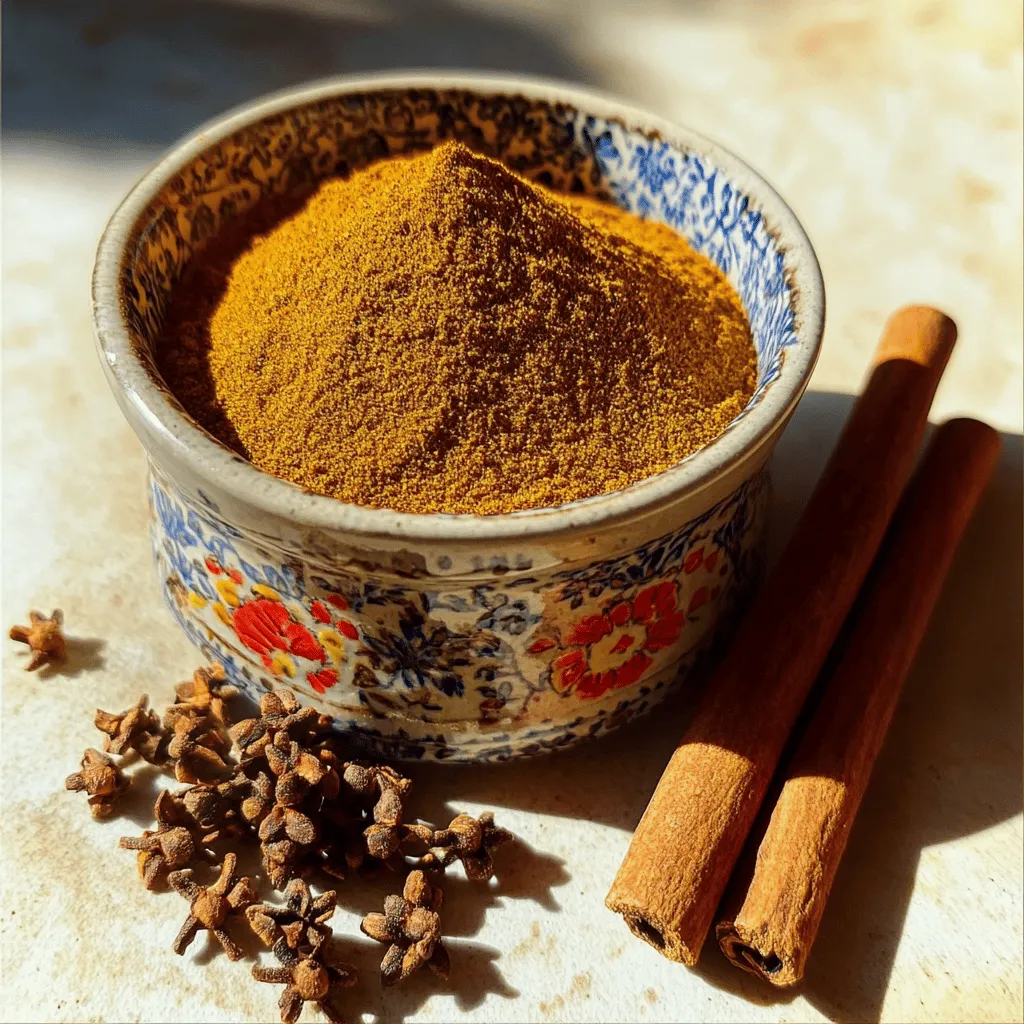
What are the Health Benefits Associated with Garam Masala?
Garam masala offers many health benefits. It can boost your health in various ways.
Does Garam Masala Have Anti-inflammatory Properties?
Yes, garam masala has anti-inflammatory properties. Spices like turmeric and cinnamon can help reduce inflammation. These spices fight free radicals. They may lower the risk of chronic diseases. This makes garam masala a great addition to your meals.
How Does Garam Masala Aid Digestion?
Garam masala aids digestion through its spice blend. Ingredients like cumin and coriander support healthy digestion. Cumin can help ease bloating and gas. Coriander can soothe the stomach. This makes garam masala great for your gut health.
Are There Any Specific Nutritional Benefits to Consider?
Garam masala offers many nutritional benefits. It contains vitamins and minerals. Spices like cardamom add essential nutrients. They support your immune system and overall health. Using garam masala in your meals can make them tastier and healthier. Try it in the Garam Masala Magic recipe to experience its full benefits!
How Can You Make Your Own Garam Masala at Home?
Making homemade garam masala is simple and fun. You can adjust the spices to your taste. Here’s how to make garam masala from scratch.
Start with whole spices. You need cumin seeds, coriander seeds, black peppercorns, cloves, cardamom pods, a cinnamon stick, nutmeg, and bay leaves. Each spice adds its own unique flavor to the blend.
What Is the Process to Prepare Garam Masala from Scratch?
1. Toast the spices: First, heat a dry skillet over medium heat. Add the cumin seeds, coriander seeds, black peppercorns, cloves, cardamom pods, and the cinnamon stick. Stir them for about 3-5 minutes until they smell great. Watch carefully to avoid burning them.
2. Cool the spices: Once fragrant, remove the spices and let them cool for a few minutes.
3. Grind the spices: After cooling, place the spices in a spice grinder or use a mortar and pestle. Add the grated nutmeg and bay leaves. Grind until you have a fine powder.
4. Store your garam masala: Keep it in an airtight container in a cool, dark place. It stays fresh for up to 3 months.
How Do You Toast Spices for Maximum Flavor?
Toasting spices is key to enhancing their flavors. The heat brings out the oils in the spices. Always use medium heat. Stir them often to ensure even toasting. When spices start to smell rich and aromatic, they are done. This step really makes a difference in your garam masala.
What Are Some Variations to Experiment With in Your Homemade Recipe?
You can mix things up with different spices. Try adding dried ginger for warmth or star anise for a sweet touch. You might also use smoked paprika for a subtle smokiness. Feel free to play with the spice ratios until you find your perfect blend.Enjoy the process and the flavors you create!
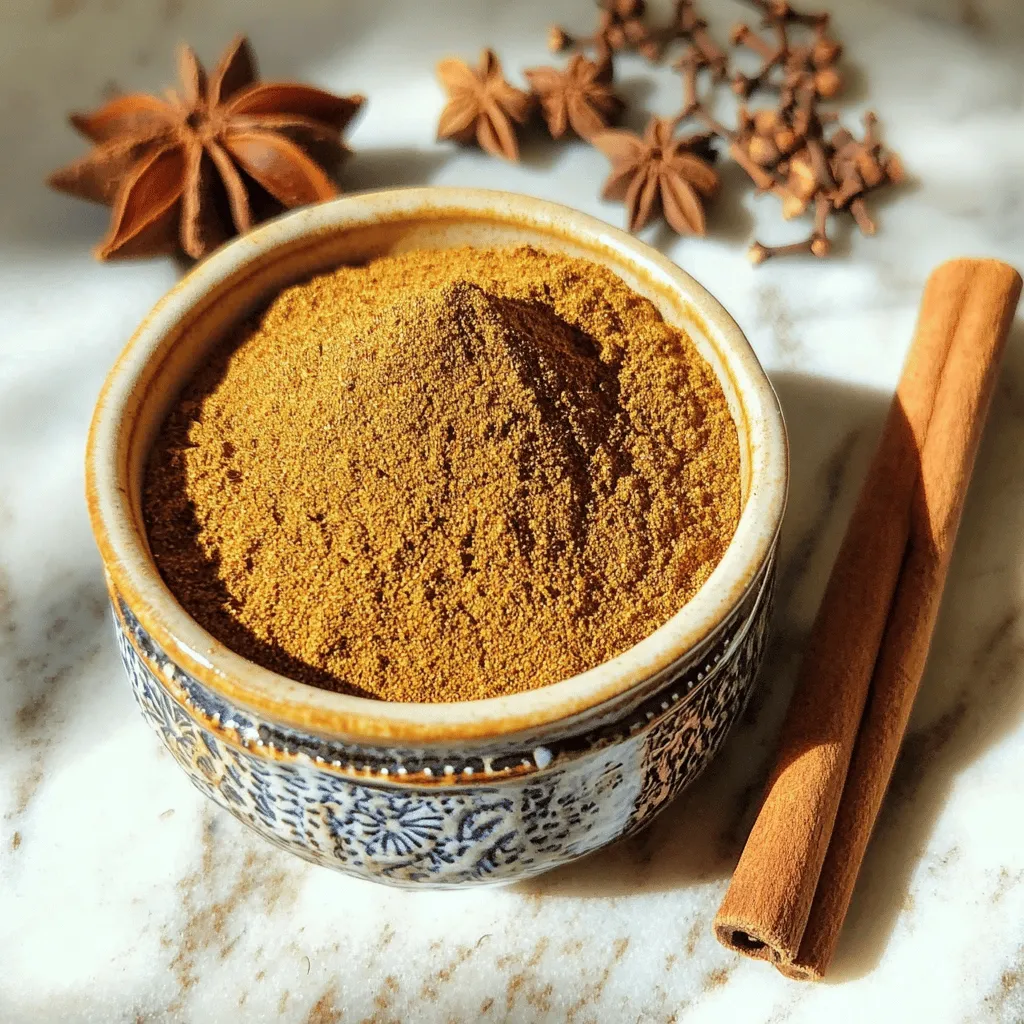
What Are Some Popular Recipes Using Garam Masala?
Garam masala adds a warm and rich flavor to many dishes. It shines in classic Indian recipes. Some popular dishes with garam masala include chicken tikka masala, butter chicken, and paneer butter masala. Each of these dishes uses the spice blend to create depth and warmth.
What Are the Most Common Indian Dishes That Utilize Garam Masala?
In Indian cooking, garam masala is a must-have. You’ll often find it in biryani, a fragrant rice dish with meat or veggies. It also enhances lentil dishes like dal. Dal with garam masala gives a hearty flavor. Each bite is comforting and satisfying.
Can Garam Masala Be Used in Vegan and Vegetarian Dishes?
Yes, garam masala works great in vegan and vegetarian meals. It adds a rich taste without meat. You can use it in roasted vegetables or chickpea curry. The spice blend elevates simple meals and makes them exciting. You can even sprinkle it on soups for a flavor boost.
How About Using Garam Masala in Soups and Stews?
Garam masala is perfect for soups and stews. It can transform a plain vegetable soup into something special. Just add a teaspoon while cooking. It brings warmth and a hint of sweetness. For stews, it pairs well with beans and lentils. Try adding it to your next stew for a cozy meal.
What Makes Garam Masala Unique in Global Cuisines?
Garam masala brings a warm, spicy flavor that enhances many dishes. This spice blend is popular in Indian cooking, but its charm spreads worldwide. You can find garam masala in various regional cuisines, adding depth to flavors.
How Does Garam Masala Influence Cuisines Outside of India?
Garam masala influences many cuisines today. In the UK, it adds spice to curries and stews. In the Caribbean, you’ll find it in jerk seasoning. It also pops up in Middle Eastern dishes, enhancing their warm flavors. This spice blend connects cultures while keeping their unique tastes.
Are There Any Notable Celebratory Dishes Featuring Garam Masala?
Yes, many celebratory dishes feature garam masala. In India, you may find it in biryani during festivals. In Pakistan, it’s key in special dishes like nihari. For many families, these meals are tied to celebrations, making them even more special.
How is Garam Masala Used in Street Food Around the World?
Street food also embraces garam masala. In India, it’s used in chaat, giving it a lively kick. In the UK, you may taste it in samosas and kebabs. This spice adds excitement to everyday eats, making them unforgettable.
How Does Garam Masala Compare with Other Spice Blends?
Garam masala and curry powder share some similarities but differ in many ways. Garam masala uses spices like cumin, coriander, and cardamom. Curry powder often includes turmeric, which gives it a yellow color. The taste of garam masala is warm and sweet, while curry powder is more earthy and bitter.
When cooking with garam masala, I find that it shines when added near the end of cooking. This method keeps its bright flavor intact. If you add it too early, it may lose its punch. Always taste as you go. Small amounts can bring a big flavor boost.
The flavor profile of garam masala is complex and layered. It often has sweet, spicy, and aromatic notes. The mix may change based on the dish. For example, in a lentil soup, the spices can deepen and meld beautifully. In a meat dish, the warmth from the spices can enhance the meat’s richness.
Garam masala is versatile. You can use it in many dishes beyond traditional Indian cuisine. Try it in roasted vegetables or even sprinkled on popcorn. These cooking tips can elevate any meal.
Garam masala is a rich and diverse spice blend. We explored its traditional ingredients, regional variations, and how to choose quality spices. You learned ways to use garam masala in cooking, including its health benefits, and how to make it at home. Lastly, popular recipes showcase its unique flavor in global cuisines.
Incorporating garam masala brings warmth, taste, and nutrition to many dishes. Make it part of your kitchen today.
